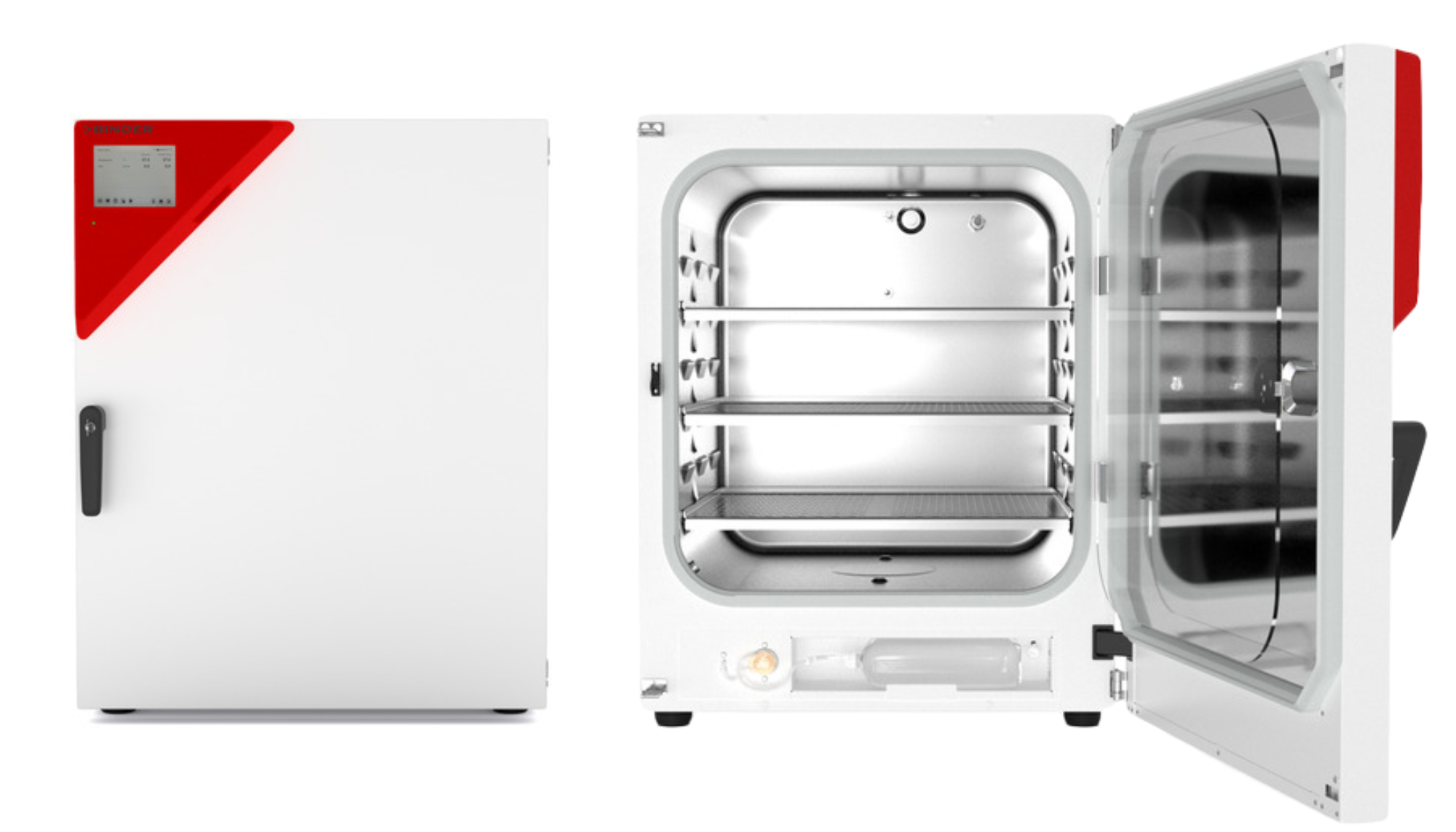
Ensuring Contamination-Free Cell Cultivation with CO2 Incubators
When working with cell cultures, maintaining a contamination-free environment is crucial. Even a single microbial contaminant can compromise weeks or even months of research. This is why CO2 incubators play a vital role in ensuring the integrity of cell cultivation. A well-designed unit significantly reduces the risk of contamination, safeguarding experimental outcomes and ensuring reliable research results.
The Risk of Contamination in Cell Cultures
Contamination can arise from various sources, including:
- Undetected contaminated cell lines, media, or reagents
- Airborne germs
- Improperly disinfected equipment
- Laboratory staff transmission
As microbial contaminants often go unnoticed until they significantly impact the culture, stringent contamination control measures are essential. High-quality CO2 incubators, such as those from BINDER, are designed to mitigate these risks and maintain a sterile environment.
BINDER CO2 Incubators: The Anti-Contamination Concept
BINDER CO2 incubators are specifically engineered to minimise contamination through several innovative features:
Seamless Interior Design
A seamless, deep-drawn stainless steel inner chamber with rounded corners ensures easy cleaning and reduces microbial build-up. Regular spray-wipe disinfection can be performed effortlessly, preventing hidden contamination in hard-to-reach areas.
180°C Hot Air Sterilisation
A critical feature of BINDER CO2 incubators is their ability to perform 180°C hot air sterilisation. This process effectively eliminates bacteria and spores, ensuring a biological reset between test series.
Elimination of Contamination Hiding Places
Unlike other incubators, BINDER units do not have air baffle plates, fans, or rack frames, which can trap contaminants and require additional cleaning. This streamlined design enhances sterility while simplifying maintenance.
Moisture Control to Prevent Microbial Growth
Excess humidity creates an ideal breeding ground for microbes. BINDER CO2 incubators manage moisture levels by directing condensation to a cold spot at the base of the chamber, keeping interior walls dry and reducing the risk of mould formation.
Airborne Germ Prevention
Even in cleanroom conditions, airborne germs pose a threat. By eliminating internal fans, BINDER CO2 incubators prevent the spread of airborne contaminants, maintaining a controlled and stable environment.
Best Practices for Setting Up a CO2 Incubator in the Laboratory
While using a high-quality CO2 incubator is essential, proper installation and environmental control within the lab further enhance contamination prevention. Here are key setup guidelines:
Placement and Spacing:
- Maintain a minimum distance of 100 mm from the wall.
- Keep 50 mm between units.
- Position incubators with clearance from the floor.
- Avoid drafts and direct sunlight exposure.
Optimising the Laboratory Environment:
- Maintain uniform ambient temperatures (~22°C) and humidity levels (70%).
- Ensure windows and doors remain closed to prevent airborne contamination.
- Implement room-wide ventilation and air filtration systems.
- Use smooth, dry, crack-free walls to limit microbial accumulation.
- Avoid storing gas bottles or cardboard boxes in the lab, as these can harbour contaminants.
Conclusion
CO2 incubators are an indispensable tool in cell cultivation, providing the controlled environment necessary to prevent contamination. BINDER CO2 incubators stand out for their advanced anti-contamination design, ensuring that research remains uncompromised. By combining the right equipment with best practices for laboratory setup, scientists can maintain the highest standards of sterility, enhancing the reliability and success of their cell culture experiments.
For more information on CO2 incubators or to check out our range click HERE.
